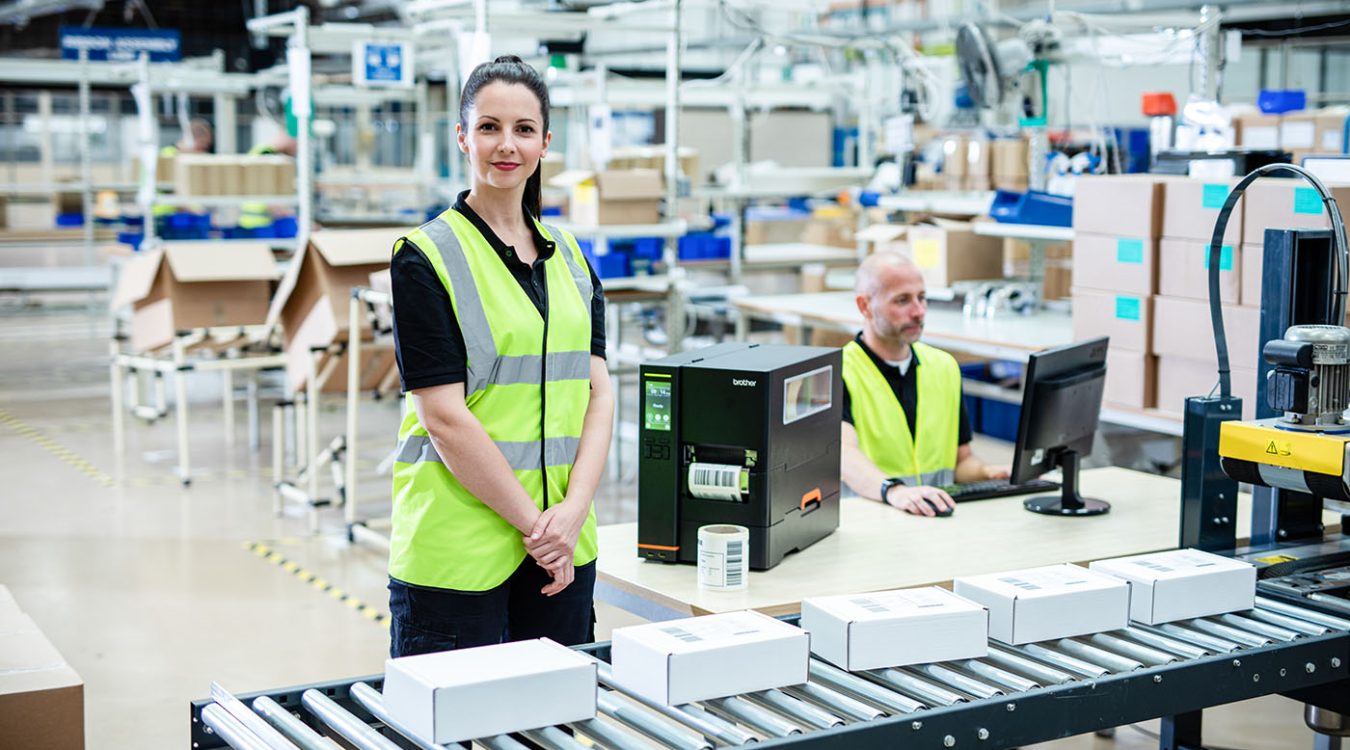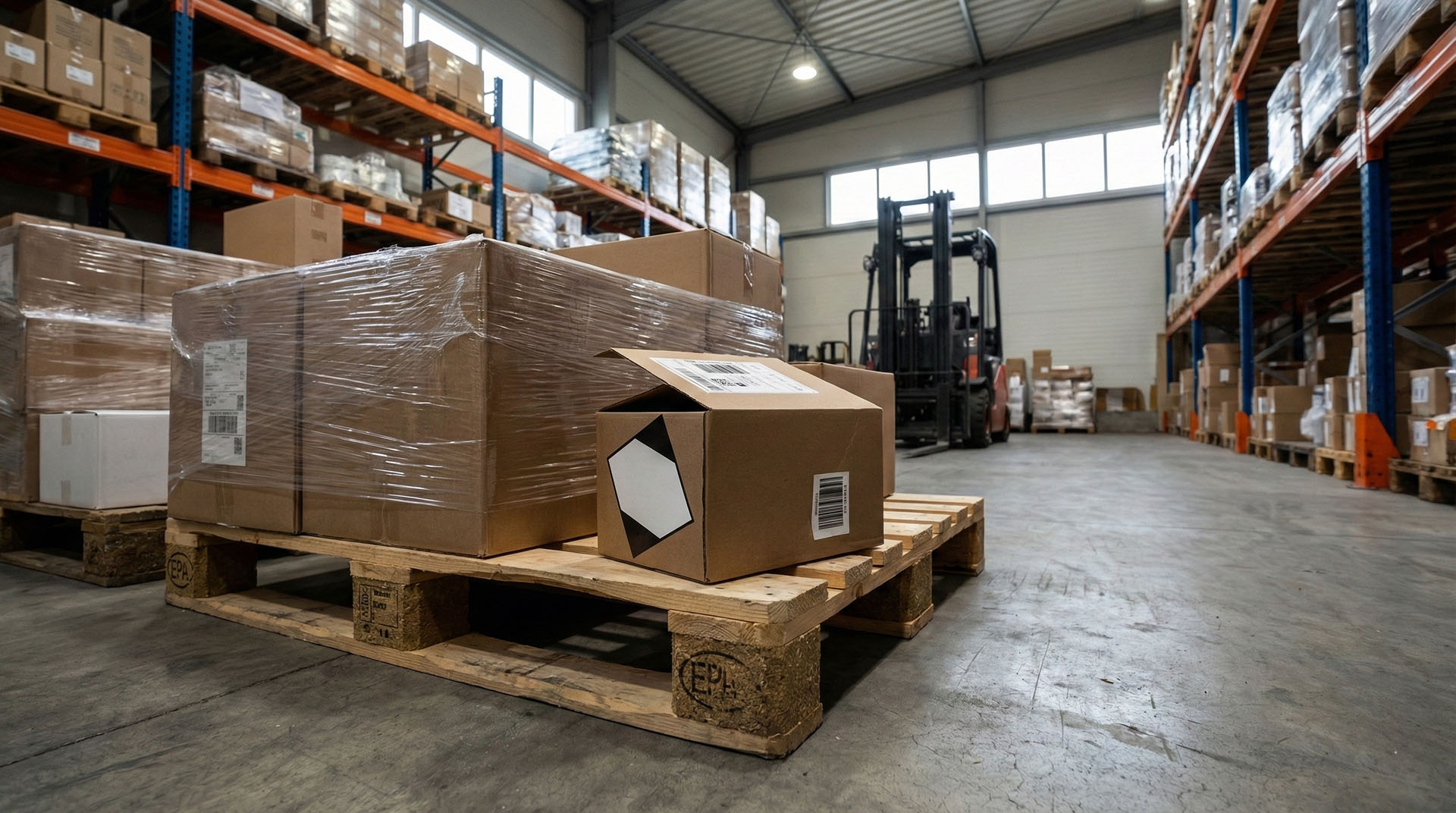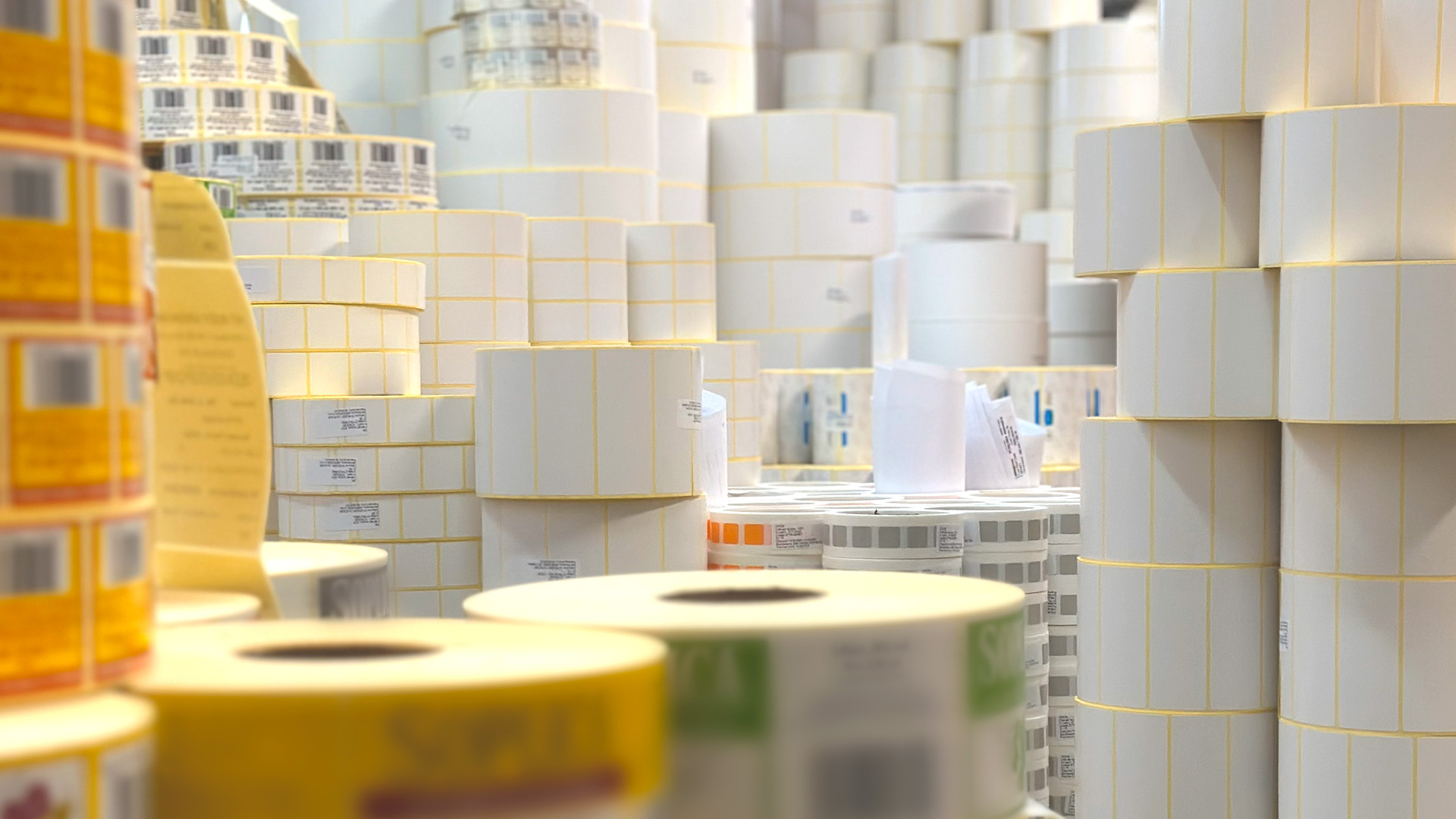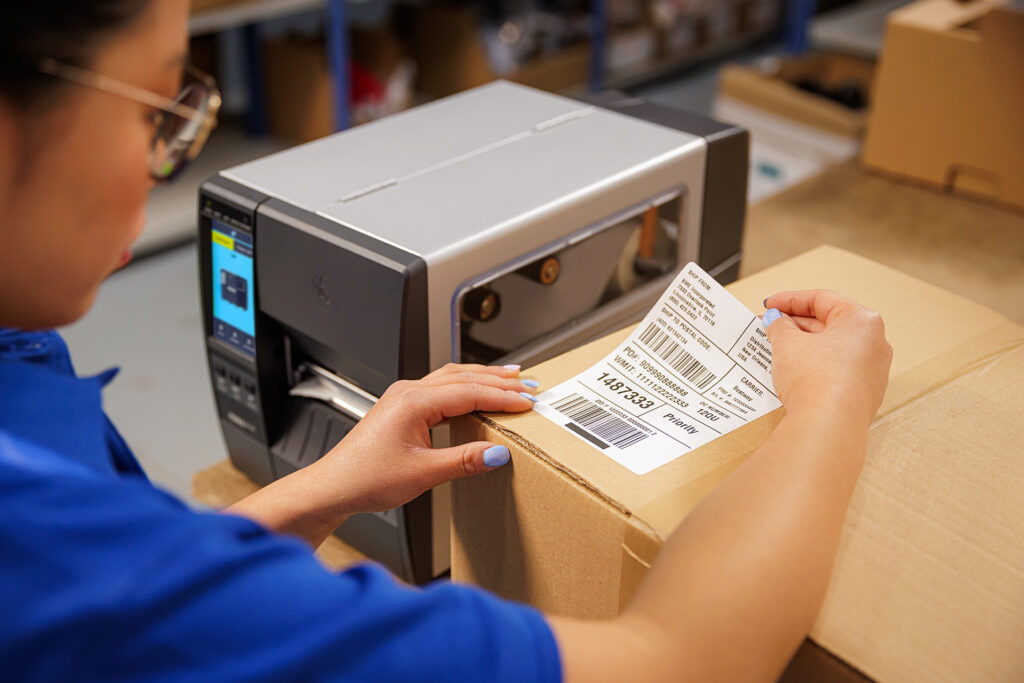
Label printers in the AutoID process
Self-adhesive label printing plays an important role in the process of identifying products in the supply chain. Both manufacturers and distributors use them. Fast and efficient label reading is crucial – it allows to maximize the time to identify goods, regardless of their location. To be sure of the quality of printing, it is worth choosing devices that meet specific needs. The most common are label printers, less frequently laser label printers.
In some cases it is possible to combine printing with automatic label application, in which case we are dealing with machines of the type print & apply. In this article, however, we focus on self-adhesive label printers and their most important features, which will help match the device to individual requirements.
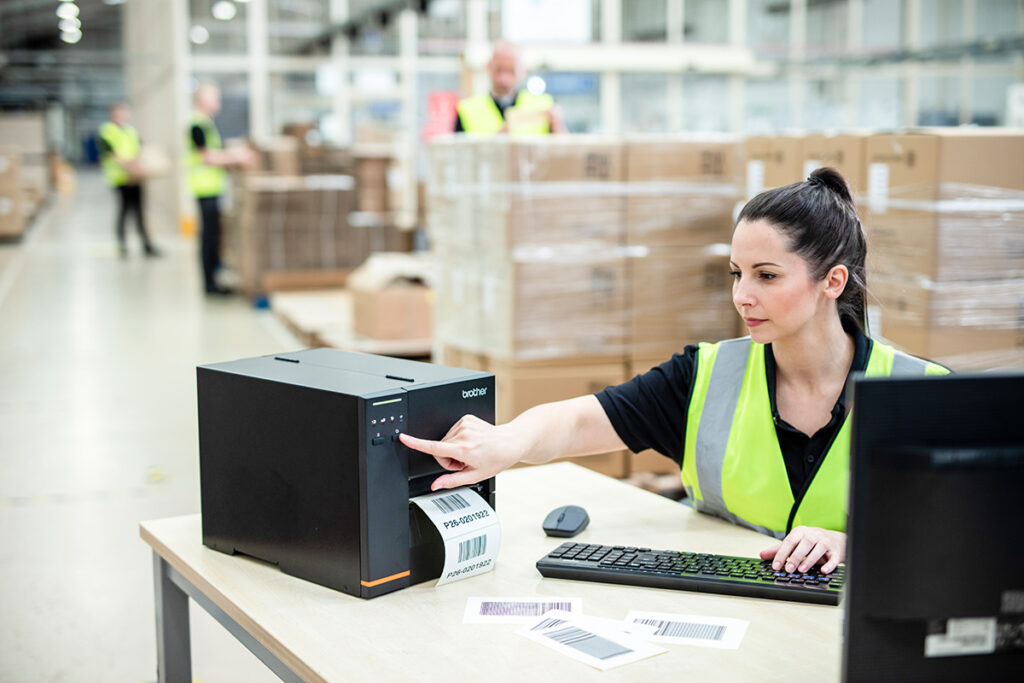
How many labels do you need per day?
One of the main criteria for choosing a printer is its performance:
Portable printers – ideal when you need to print labels directly at the workplace, such as in a warehouse or on the production floor, in small quantities. They work well for mobile work and inventory.
Desktop printers – Designed for small print runs(up to several hundred labels per day). They are characterized by simple construction and easy integration with IT systems.
Semi-industrial printers – make it possible to print medium to large runs of labels, offering greater durability and performance than desktop models while maintaining compact dimensions.
Industrial printers – created for continuous operation, allow you to print thousands or tens of thousands of labels per shift, maintaining high reliability for years, provided regular servicing.

How will the labels be used?
The type of application affects the choice of printing technology:
Short-life labels – a thermal printer, printing without a thermal ribbon, on thermal paper, will work best.
Permanent labels – a thermal transfer printer is required, in which the content is transferred from the tape to the surface of the label, which ensures high resistance to external factors.
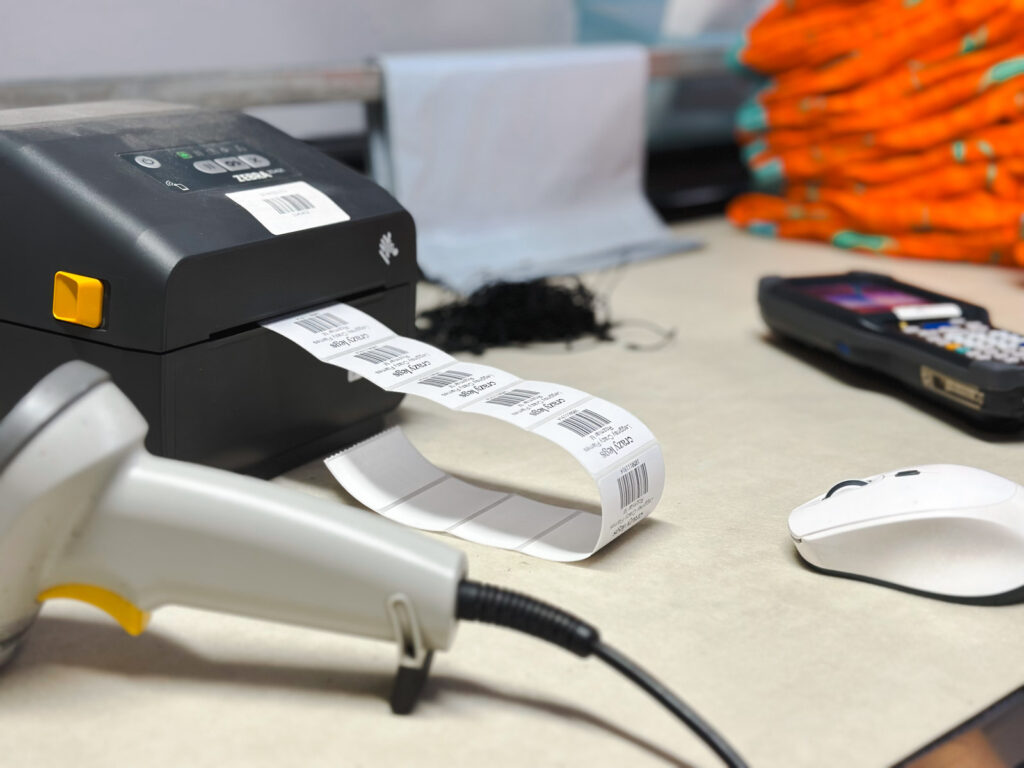
Size and content of the label
The selection of a printer should take into account the dimensions of the label and the type of content to be printed:
-
Large-format labels (e.g., pallet labels ) require wider, industrial printing mechanisms.
-
The smaller labels can be printed on desktop or mobile devices.
-
Printhead resolution:
-
200 dpi – for standard applications,
-
300 dpi – for small fonts and graphics,
-
600 dpi – for very small parts and precise details.
-
Type of material and form of labels
Label printers can print on paper, film , roll labels, fanfoldlabels, linerlesslabels , which require special silicone security rollers.


